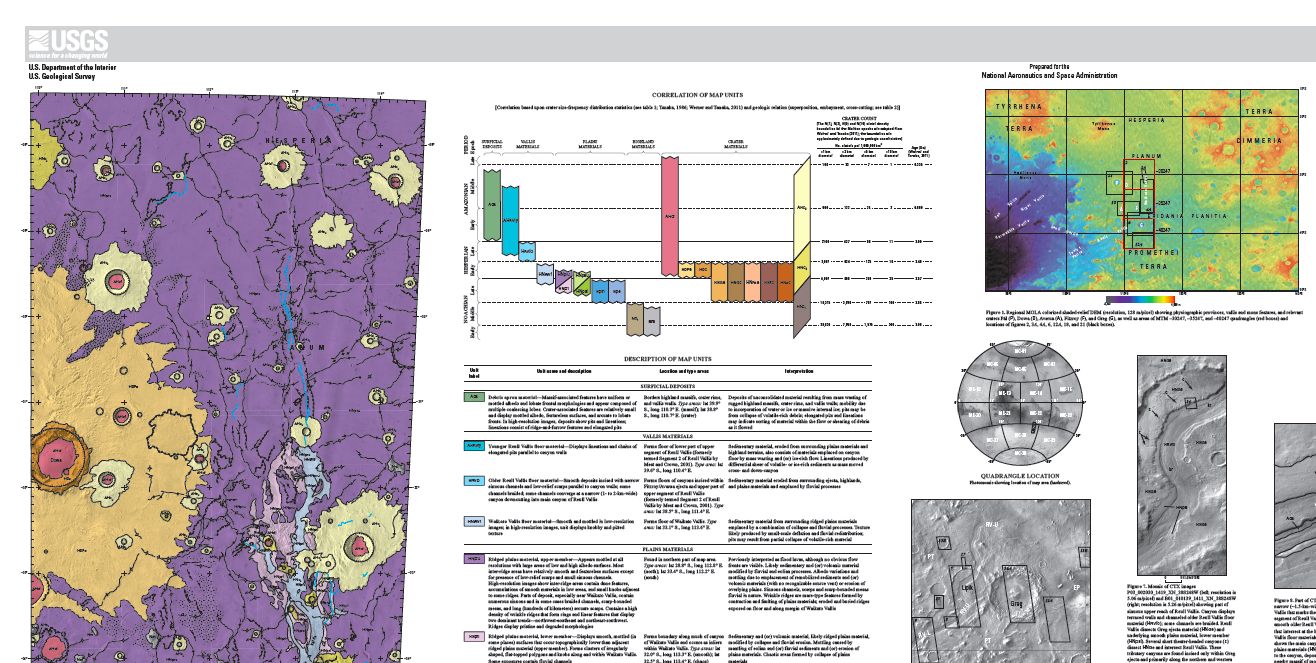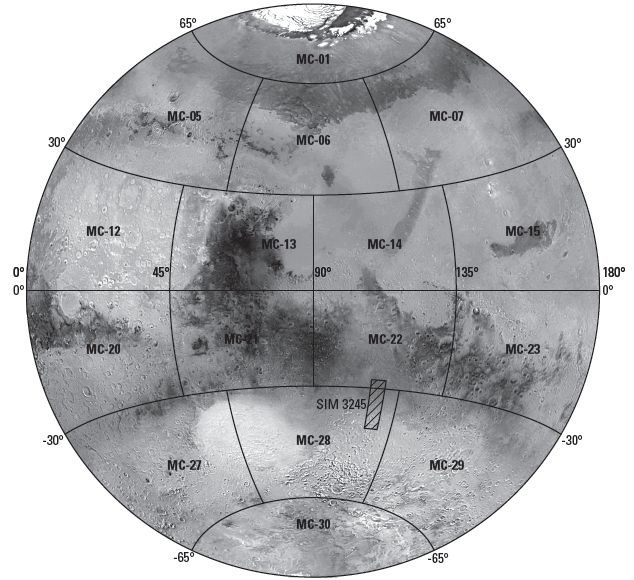
An incredibly detailed new map of Mars' southern highlands shows how profoundly liquid water sculpted the region long ago, scientists say.
"This map depicts the complicated sequence of geologic processes that have served to modify ancient, rugged highland terrains surrounding the Hellas impact basin and shows evidence for the persistent effects of water and ice in degrading the Martian surface," David Crown, of the Planetary Science Institute (PSI) in Tucson, Arizona, said in a statement.
Crown and his PSI colleague Scott Mest produced the new map, which was published by the United States Geological Survey (USGS). It covers the area on Mars from 27.5 to 42.5 degrees south latitude and 110 to 115 degrees east longitude.

The map sheds particular light on the evolution of two canyon systems in the southern highlands, Waikato Vallis and Reull Vallis. Researchers think both canyons formed when underground water came to the surface, collapsing the ground.
Images from NASA's two Viking orbiters, which began circling the Red Planet in the 1970s, seemed to suggest that Waikato Vallis and Reull Vallis were part of the same ancient canyon system. But the new map — constructed with data collected by NASA's Mars Reconnaissance Orbiter, Mars Odyssey and Mars Global Surveyor spacecraft — reveals that Waikato and Reull were actually separate canyons separated by a plains landscape known as Eridania Planitia.
In fact, water released from Waikato Vallis formed a shallow lake in these plains long ago, scientists said.
While Waikato and Reull are the dominant landforms in the area, the new map also shows many small channels that flowing water carved into the southern highlands, likely about the same time the two big canoyns were forming, researchers said.
Get the Space.com Newsletter
Breaking space news, the latest updates on rocket launches, skywatching events and more!
"Most highland peaks and the walls of many impact craters show evidence that ice-rich sediments flowed downhill, forming features that resemble rock glaciers on Earth; these features represent the most recent water-related activity in the area, and may be active today," PSI representatives wrote in a description of the new map.
You can download a free copy of the 118-megabyte Mars map from the USGS website here: http://pubs.usgs.gov/sim/3245/
Follow Mike Wall on Twitter @michaeldwall and Google+. Follow us @Spacedotcom, Facebook or Google+. Originally published on Space.com.
Join our Space Forums to keep talking space on the latest missions, night sky and more! And if you have a news tip, correction or comment, let us know at: community@space.com.

Michael Wall is a Senior Space Writer with Space.com and joined the team in 2010. He primarily covers exoplanets, spaceflight and military space, but has been known to dabble in the space art beat. His book about the search for alien life, "Out There," was published on Nov. 13, 2018. Before becoming a science writer, Michael worked as a herpetologist and wildlife biologist. He has a Ph.D. in evolutionary biology from the University of Sydney, Australia, a bachelor's degree from the University of Arizona, and a graduate certificate in science writing from the University of California, Santa Cruz. To find out what his latest project is, you can follow Michael on Twitter.









